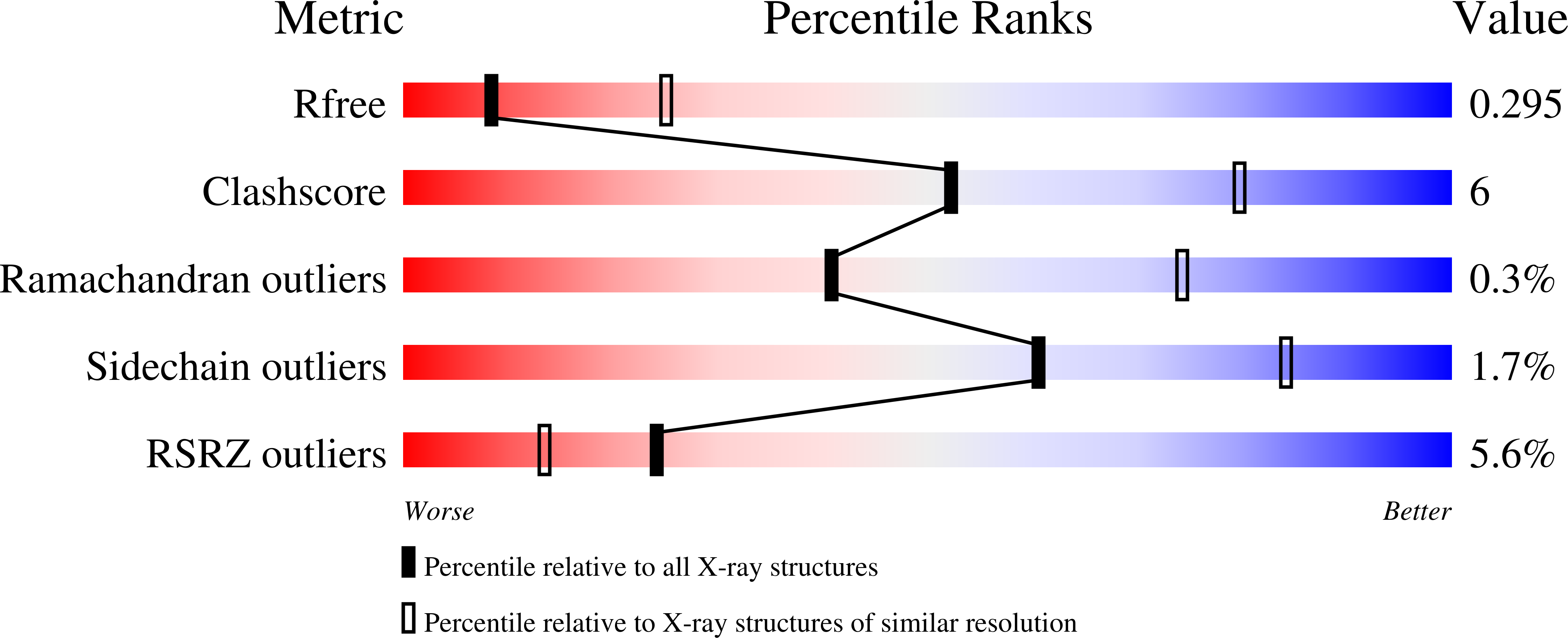Functional Coupling of Duplex Translocation to DNA Cleavage in a Type I Restriction Enzyme.
Csefalvay, E., Lapkouski, M., Guzanova, A., Csefalvay, L., Baikova, T., Shevelev, I., Bialevich, V., Shamayeva, K., Janscak, P., Kuta Smatanova, I., Panjikar, S., Carey, J., Weiserova, M., Ettrich, R.(2015) PLoS One 10: 28700
- PubMed: 26039067
- DOI: https://doi.org/10.1371/journal.pone.0128700
- Primary Citation of Related Structures:
4BE7, 4BEB, 4BEC - PubMed Abstract:
Type I restriction-modification enzymes are multifunctional heteromeric complexes with DNA cleavage and ATP-dependent DNA translocation activities located on motor subunit HsdR. Functional coupling of DNA cleavage and translocation is a hallmark of the Type I restriction systems that is consistent with their proposed role in horizontal gene transfer. DNA cleavage occurs at nonspecific sites distant from the cognate recognition sequence, apparently triggered by stalled translocation. The X-ray crystal structure of the complete HsdR subunit from E. coli plasmid R124 suggested that the triggering mechanism involves interdomain contacts mediated by ATP. In the present work, in vivo and in vitro activity assays and crystal structures of three mutants of EcoR124I HsdR designed to probe this mechanism are reported. The results indicate that interdomain engagement via ATP is indeed responsible for signal transmission between the endonuclease and helicase domains of the motor subunit. A previously identified sequence motif that is shared by the RecB nucleases and some Type I endonucleases is implicated in signaling.
Organizational Affiliation:
Center for Nanobiology and Structural Biology, Institute of Microbiology and Global Change Research Center, Academy of Sciences of the Czech Republic, Zamek 136, CZ-373 33 Nove Hrady, Czech Republic.
















